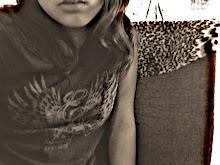The Roman soldiers wore helmets and breastplates; underneath them they wore their togas and the different colors and stripes represented their level of authority. In one scene where Messala, Ben-Hur's childhood friends is talking to his other officer. Also later, when Ben-Hur arrives to meet his old friend. Messala and all the other soldiers where helmets, capes, and breastplates. Because Messala is the commanding officer, he sports high level garmets, like red togas and crafted and designed breastplates. His helmet top has red feathers instead of the average broom brush on others' helmets.
Later when Ben-Hur and Messala are greeting each other, they test their sporting skills. Probably, when they were young, they competed in javelins and other sports activities together. In this scene, they play a short game of javelin against the door arch.
Jewish people too owned slaves. Ben-Hur's family has two (showed in the movie) slaves, Simonides and his daughter, Esther. Simonides isn't like a slave who is badly treated and punished and made to do everything the master wishes. Simonides travel around to gather fine items to bring back to Ben-Hur for him to trade. When Simonides returns with more items, Ben-Hur greets him like family, almost as if he wasn't a slave and Ben-Hur didn't own him. Later on, even Esther, whom is about to go into an arranged marriage is given freedom as a wedding present by Ben-Hur. She even says that she doesn't feel like she's lived a life of a slave. This shows that different familes treat their slaves differently.
When Ben-Hur's sister accidently injured a soldier, and are arrested immediately by Messala's soldiers. Even though Messala knew it was an accident, he doesn't give hims old friends a trial. Maybe it was to show and warn the other Jewish people who tried to interfere with the Roman Empire taking over. This shows how social ranks can differ whether someone gets a trial or not. In this case, Ben-Hur was one of the many Jewish people who didn't get a trial and was sent to the galleys.
Galleys were the large Roman boats with a small sail. The real power comes from the many slaves rowing oars below deck. Those slaves are chained to the boat that when the boat sinks, all the slaves die with it; an example of how slaves were not cared and made no difference to the lives of the Roman soldiers. Ben-Hur now is a slave and with the other men down there were only put there as if they were sentenced to death. The Romans keep them alive so that they can row their ships until they die, then they can be replaced by other slaves. The slaves here are treated poorly. They were whipped when they weren't going by the rhythm, when they were doing a poor jobs, or when they were tired and passed out or stopped rowing.
Tuesday, January 06, 2009
Ben-Hur: Reflections of Culture
Posted by Jen at 8:31:00 PM
Labels: Humanities, Rome Empire, slaves

